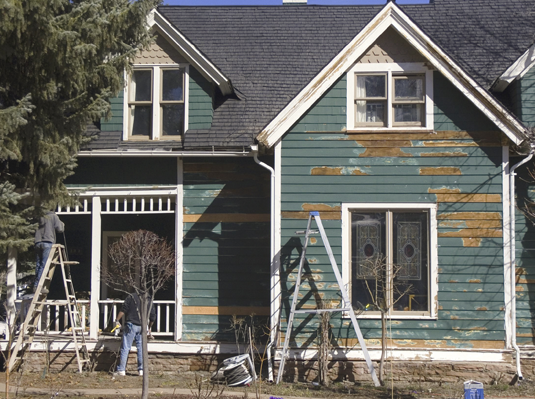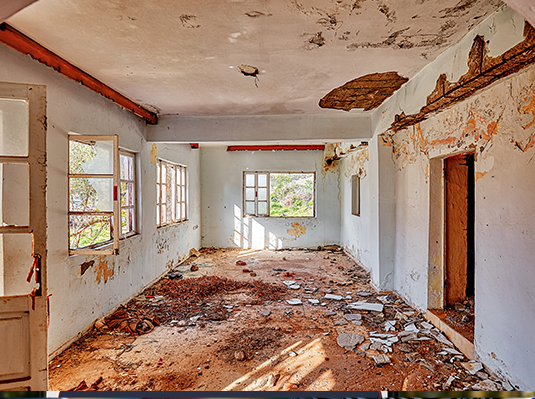.png)
Not all home insurance polices are built equally; some very small differences between policies can make some very big differences come claims time. Do you know everything your homeowners insurance policy covers? Do you know where it will not cover you? Read on to make sure your answer is “yes” to both.
What’s the different between a named peril and open peril policy?
In home insurance, an “Open” Peril (aka “All” Peril) policy always covers your house for more than a “Named” Peril policy. An Open Peril policy comes with a list of 9 things you’re NOT covered for and everything else under the sun will be covered. Meanwhile, a Named Peril policy only covers you for a list of 9 or 16 things (depending on the policy). Let’s unpack this a little more.
In insurance, we use the term “Peril” to describe something that causes damage to your house or your belongings. Fire, lightning, wind, or hail are all examples of a peril. Crazy things can happen in life and a lot can go wrong at your house, so it’s important to make sure your most valuable asset is protected. You want to be covered for as many scenarios as possible. A Named Peril Policy gets its name because it only covers you for the perils it names or lists out. If you buy a named peril policy, your insurance comes with a list of only 9 to 16 perils you’ll have coverage for – that’s it. The burden of proof also falls on you as the homeowner to be able to prove to the insurance company that what damaged your home or belongings IS on that list of perils they gave you. You’re only covered for what they named specifically on the policy as being covered.
I only write my clients with an Open Peril Policy because it covers them way better. Instead of receiving a list of what you ARE covered for, you’ll receive a list of what you’re NOT covered for. If the peril is not on that short list, then your home will be covered. We call this list the “9 Exclusions.” The burden of proof falls off of you as the insured as the insurance company will have to prove one of those 9 Exclusions is what caused the damage, which we’ll see next will be pretty hard to do.
What does home insurance not cover?
If I purchased an Open/All Peril home insurance policy, there are only a few things that my insurance will NOT cover if my home is damaged: The 9 Exclusions. We’ll unpack these 9 together and you’ll see why some of them are not covered, or where you could get alternative coverage to bridge the gap.
- 1-2. War & Nuclear Disaster: I typically lump these two together as they’re pretty similar. If either one of these happens to you, odds are I’m toast as well… You’ll need to call someone a lot more important than me to get help and your home insurance will not cover you.
- 3. Flood or Water: These two exclusions may sound the same, they’re actually handled very differently. “Flood” is defined by FEMA as “a general and temporary condition where two or more acres of normally dry land or two or more properties are inundated by water or mudflow.” When we talk about flooding in insurance, we’re talking about outside water coming into your home (usually from natural water). If you want protection from Flood, you’ll need to purchase a separate Flood Insurance policy – click here to learn more.
- When we talk about “water” damage related to home insurance, this is more about pipes bursting or water within your home getting places it shouldn’t be. If you have an Open Peril policy, “sudden and accidental” water coverage will be included for those immediate pipe bursts. Depending on your state, there could still be 1-4 more other water coverages that are excluded from your policy unless you add it on. “Water backup” is an example of a water coverage that needs to be endorsed to have protection against water coming back up from sewers and drains.
- 4. Earthquake: If you’re in an area of the country that’s concerned with damage from earthquakes, you’ll want to make sure you purchase an earthquake policy. Some insurance carriers can endorse coverage on your home policy, but it will not come included automatically.
- 5. Wear & Tear: You can’t file a claim simply because your home is getting older, and you see the effects of it. There must be a claim of a peril that is causing the damage you want replaced.
- 6-7. Rust & Mold: When it comes to filing insurance claims, if the original cause of the damage to your home/belongings is a covered peril, then the following damages will be covered too. Let’s say you had a pipe burst in your kitchen and water got all over. If that’s covered on your policy, then the insurance will cover any damages that may be an effect from that peril. So, if that pipe burst causes some Rust or Mold, it would be covered since the water claim was covered. However, if you happen to purchase a home with existing rust or mold, that’s when these items would be excluded. If you can’t trace it back to a covered peril that caused the damage, you can’t file a claim for it.
- 8. Governmental Actions: Simply put, if the government or a government agency is the cause of damage to your home, your home insurance will not cover you. For example, if the police have to knock down your door to search inside your home, you’d have to as the police for a new door, not your insurance company.
- 9. Intentional Acts: Last but certainly not least, you can’t burn your own home down for insurance money. If you file a claim and the insurance company finds out you caused the damage intentionally, they will not pay you a penny. If you’re doing this much research about home insurance right now, you’re either a person who obviously would never do this – or the person we should be most concerned about. Free advice: don’t waste your time and money trying.
Why isn't my cracked foundation covered?
A cracked foundation is not covered on home insurance as that would be classified under one of the 9 Exclusions: Wear & Tear. Perhaps you live in a state where slab foundations are common and the ground likes to shift throughout the years. If this happens to you and you start to have cracks running through your floors or walls, you won’t be able to file a home insurance claim because there is no covered peril causing this damage. Your home naturally aging and settling is not covered, so you would need some kind of foundation warranty outside of your home insurance policy if you wanted this covered.
Why isn't flood covered on my home insurance?
Flood insurance needs to be purchased as a sperate policy from your home insurance. Since flooding is one of the 9 Exclusions of an Open Peril policy, and very few companies let you endorse it, you’ll need to buy a policy specifically for flood coverage. There’s no such thing as NOT being in a flood zone since technically it could flood anywhere. That being said, there are certainly higher and lower risk flood zones. If you live in a high-risk zone, it’s likely that you’ll be required by both your home insurance provide and your mortgage company to purchase flood insurance. With the risk being higher, they’ll want to make sure you’re protected – and you should too. If you live in a low-risk flood zone, you’ll have the option to purchase or decline flood insurance. About 20% of flood claims nationwide still occur in the lower risk zones. When it comes to buying flood insurance, you can either purchase a public NFIP (National Flood Insurance Program) policy or buy from a private provider. It’s always a good idea to discuss all of your options with your agent.
The contents of this article are for informational purposes only. You should not act or refrain from acting based on this information without first consulting a Goosehead licensed agent at [email protected]. We disclaim all liability for actions taken or not taken by you based on the contents of this article which is provided "as is." Goosehead makes no representation that this content is error-free.

